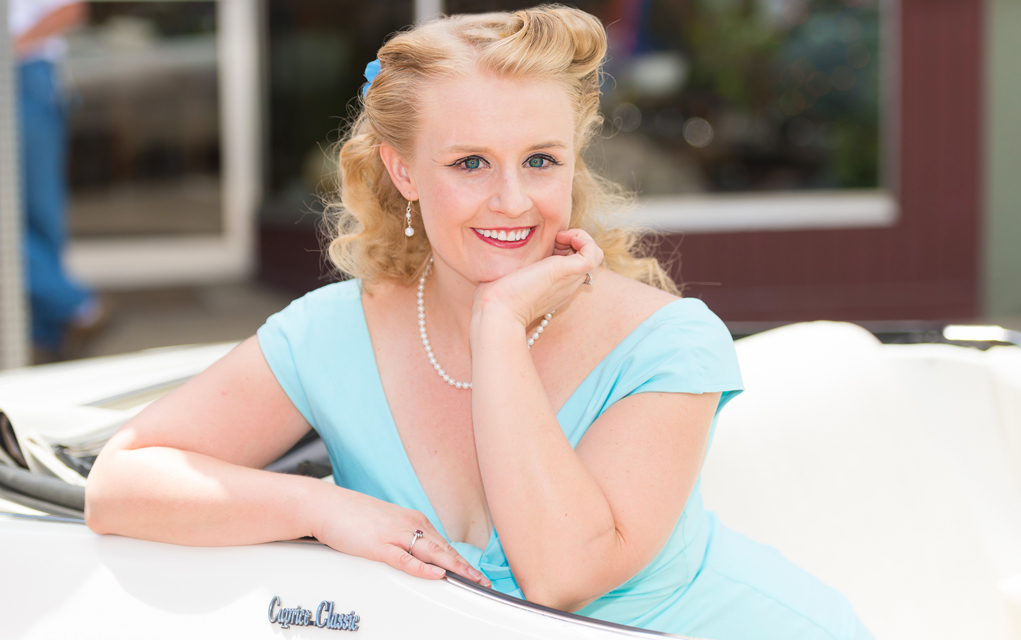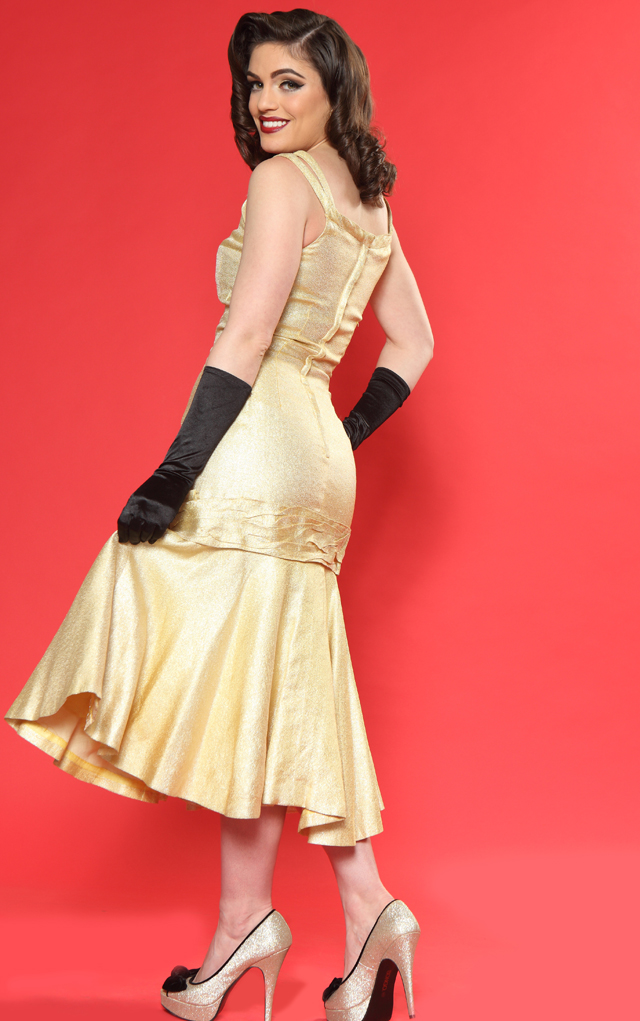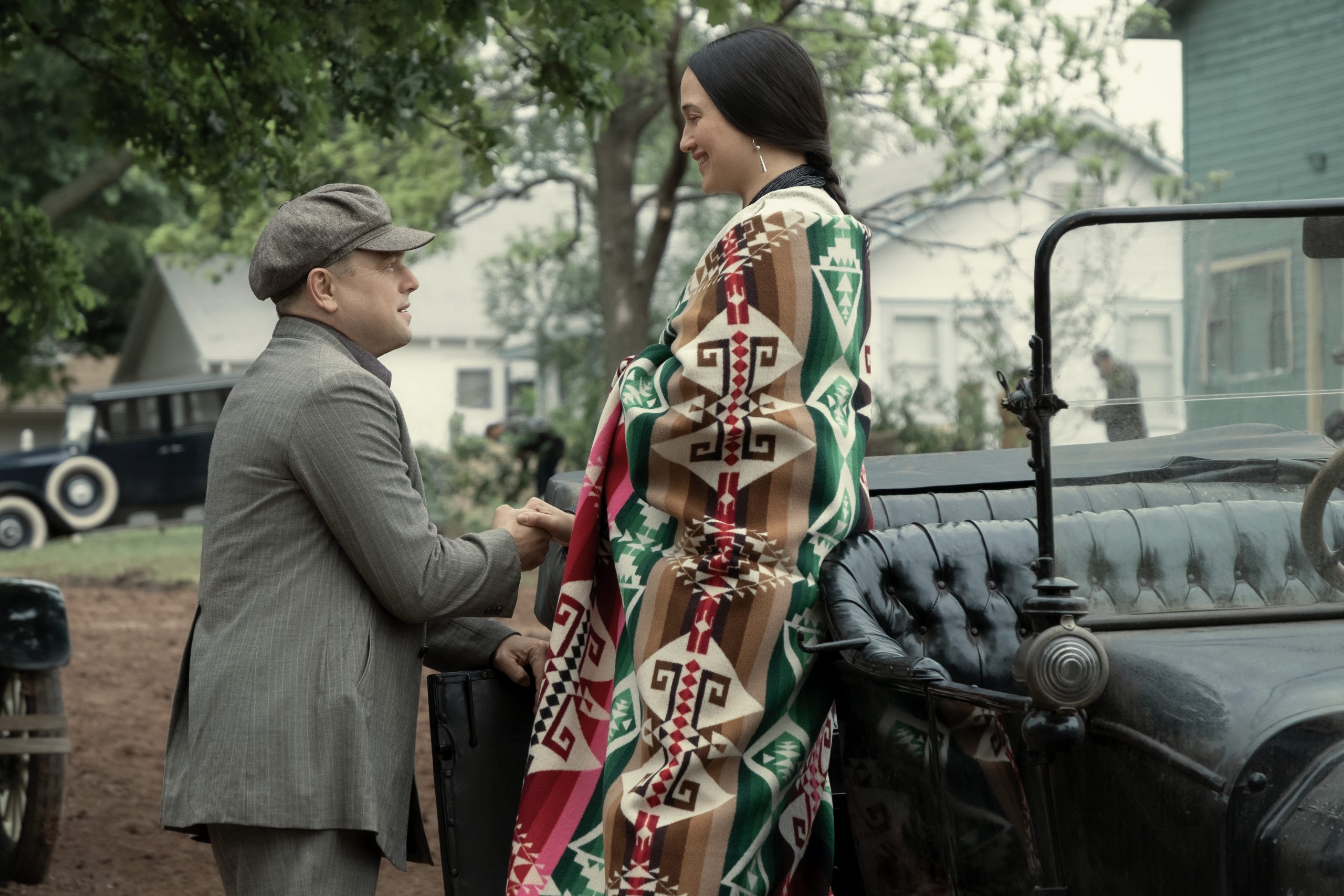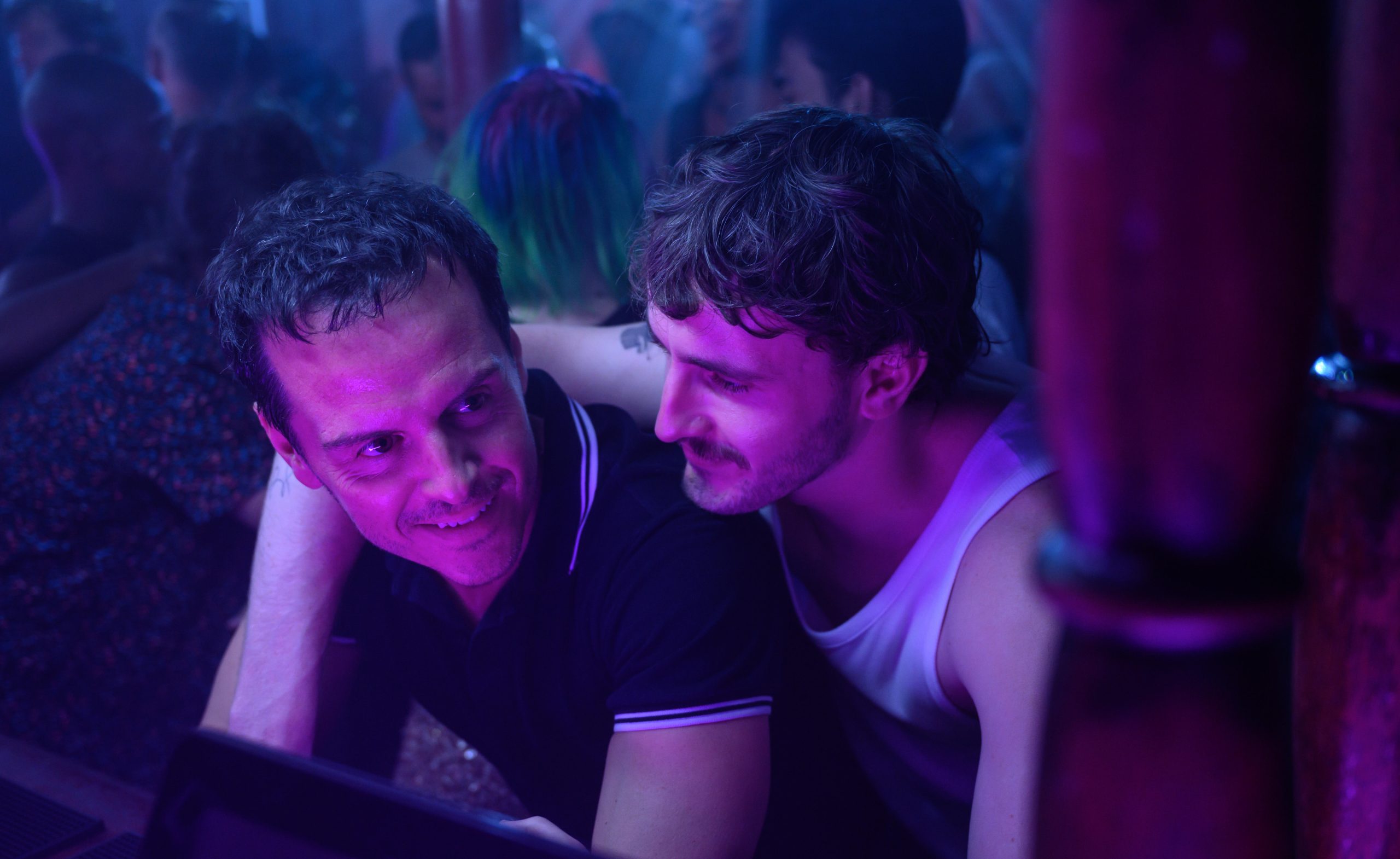
Kalia Motley grew up in a world of nostalgia. Her mom was a connoisseur of vintage clothing and her dad a jazz musician. Through her life, she developed an affinity for the past and a nagging feeling of being born in the wrong decade.
“Perhaps I feel misplaced in our time. … Taking more time to savor life is very appealing to me, which I think is very prevalent in earlier decades. Everything is so fast paced these days, I like to slow my roll sometimes,” she says with a laugh.
As a remedy, she works as a pinup model and full-time burlesque dancer, known by the name Bang Bang Von Loola. A “pinup” is simply described as a poster or image showcasing a celebrity or sex symbol designed to be displayed in some fashion. It can also refer to the model in the picture. Nowadays the term most commonly refers to the women and the style of its heyday in the 1920s-’50s.
Motley is one of the many ladies featured in the new documentary Pin Up! The Movie, which follows the blossoming modern-day pinup culture of Colorado. On June 19, the film premieres on Front Range at License No. 1 in the Boulderado. Pin Up! explores the many facets of the genre, including burlesque, rockabilly and roller derby, and it follows contestants as they compete in the pinup contest at the 1940’s WWII Era Ball, which happens this year on June 18 at the Boulder Municipal Airport.
The documentary is directed by Longmont’s Kathleen M. Ryan, who is an associate professor at University of Colorado Boulder. Pin Up! came about after Ryan stumbled on the community after her last film Homefront Heroines: The WAVES of World War II, about the unsung women who volunteered for the Navy under the Women Accepted for Volunteer Emergency Service. For her latest project, Ryan says she wanted to analyze a subculture that is “all about accepting yourself and embracing diversity in beauty.”
Ryan was struck by the inclusiveness of the movement and the celebration of individuality. It’s not an exclusive club; all body types, genders, orientations and ethnicities are welcome.

Each member has a different reason for embodying the pinup girl lifestyle. Boulderite Emilie Johnson, who’s also in the film, was drawn to it during high school. Not only did the clothes appeal to her, but so did the power dynamic of the women she saw in the classic Hollywood films.
“I never had a body shape that fit into the normal fashion that every other girl could fit into it,” Johnson says. “Pinup fashion matched my body and it matched the way I felt and how I thought I should look. It made me feel good and comfortable and complete. …
“I really enjoyed how it was sexy and classy. It was still powerful yet feminine at the same time. If you watched any of the leading ladies, like the femme fatales, they were gorgeous and feminine, yet they were in control and in power. I like that aspect of it.”
The power of pinup is often questioned, as it elicits eras where women were not treated equally. But Ryan says almost all the subjects in her film self-identify as feminists, and while they model themselves after the images of this period, they are not all promoting or accepting traditional gender roles.
“This imagery has been used for very feminist purposes,” Ryan says. “Guys like to look at it, but women are using it for different reasons. And they’re using it as a way to define and assert their sexuality in unexpected ways in the public sphere. … They’re adopting the aesthetics of those times, but not necessarily the politics of those times. Or they’re kind of tweaking those politics and playing with the idea that it is this conservative creature — that’s what makes it so dangerous or so badass.”

You might think that this “feminist use of the pinup” is something appropriated by the modern-day feminist movement. But that’s not the case says Maria Buszek, art historian, University of Colorado Denver professor and author of Pin-Up Grrrls: Feminism, Sexuality, Popular Culture. As Buszek went back through history expecting to find criticism and hatred toward the pinup, she actually found that the pinup had been integral to the feminist movement as early as the 1860s. Just as prevalent as the imagery, so was the debate on its place in the women’s rights movement.
Since its very beginning, feminism has questioned how to “properly” represent sexuality. Even early figures like Susan B. Anthony and Elizabeth Cady Stanton were on opposite sides of the fence.
“For example, Anthony said we should be pure and shouldn’t be talking about sex or even child rearing, because it suggests women are sexual creatures. Her versus Stanton, who had a bunch of kids and wrote very passionately about her husband and her sex life and her sex drive in her letters and in her journals,” Buszek says. “You had these pioneers of American feminism — one saying, ‘Sex is a distraction,’ and the other saying, ‘No, sex is integral to women’s lives’ — disagreeing with each other.”
By no means is it a new debate or is it clear-cut. Buszek makes a point to mention that not all pinup iterations are progressive or helpful — as always, there’s not a one-size-fit-all sentiment.
“Women being sexual isn’t always good just like it isn’t always bad, and the pinup reflects that, as a sexual portrait, and ideally as a sexual self-portrait,” she says. “Sometimes it’s awesome, and sometimes it’s really gross.”
In Pin Up! The Movie, most women vehemently claim to be champions of the former category, affirming that pinup empowers them. Ryan says it’s helped many people, especially in times of strife.
“You have women who came from bad places and have turned to pinup as a way to understand, reclaim and own their identity and their sexuality,” she says. “There’s something that happens when they’re doing this and recognizing their own outer beauty that engages their inner beauty.”
Both Johnson and Motley say they do pinup for themselves. Motley says she considers it a kind of therapy and that it transcends into her own self-care, self-love and confidence, no matter what anyone says.
“I can be just as much as a feminist wearing red lipstick and false eyelashes if I want to,” Motley says. “It’s my choice and my power, and I can present that in any way that I want.”
On the Bill: 1940’s WWII Era Ball. 6 p.m. Friday, June 17, Boulder Municipal Airport, 3393 Airport Road, Boulder, 720-924-1945. Pin Up! The Movie.10 a.m. Licsence No. 1, 2115 13th St., Boulder, 720-924-1945.



